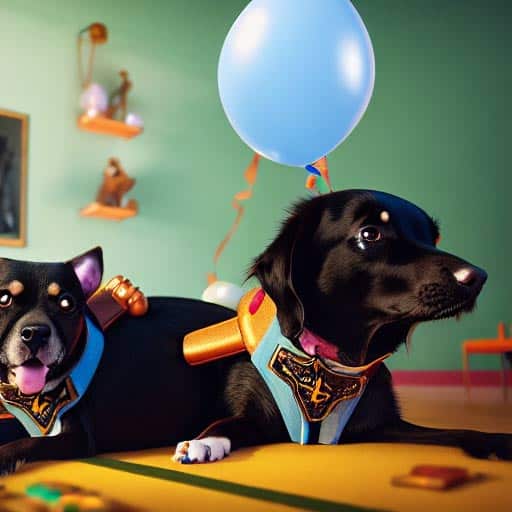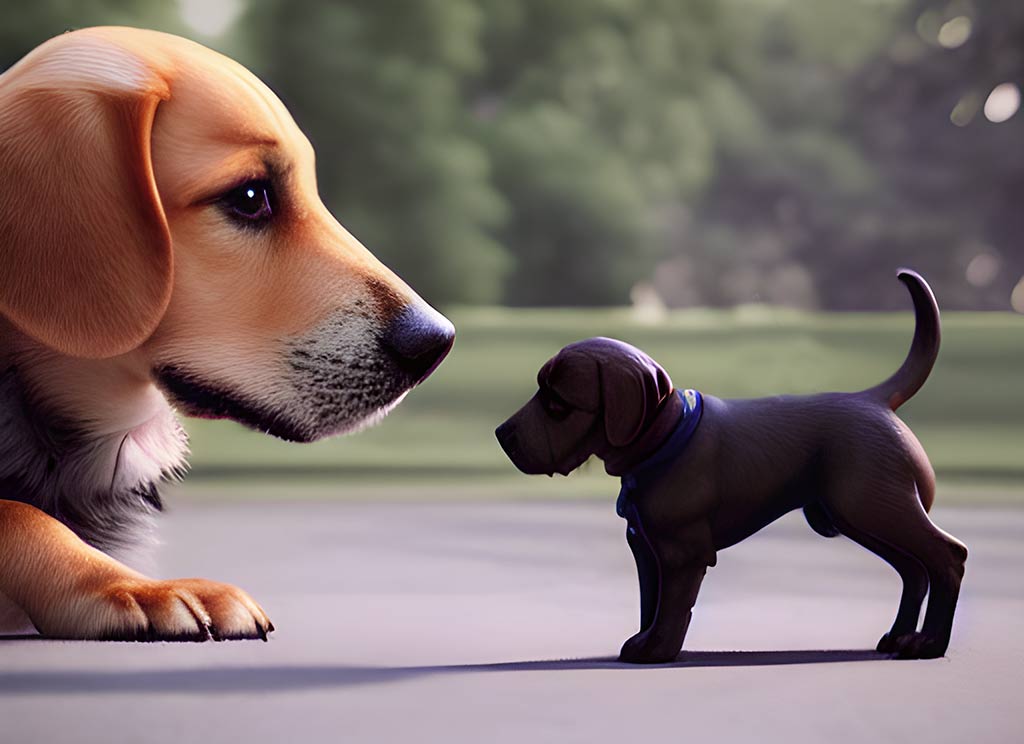There’s no doubt that introducing a new puppy to your current dog can be a challenge.
However, with the proper planning and preparation, you can make sure that the transition goes smoothly and that both dogs are happy and content.
In this article, we’re going to outline simple steps on how to introduce your puppy to your dog, that will help make the introduction go as smoothly as possible.
Ps if you don’t already have a dog, check out our guide – should I get a dog? Or if you think your dog might actually be about to have some puppies(!) check out our guide on how to tell if your dog is pregnant.
Table of Contents
- How to Prepare for Introducing a New Dog into Your Home
- How to Introduce a New Puppy To Your Older Dog
- Will My Current Dog Get Used to the New Puppy?
- When Can My Puppy Meet My Other Dog?
- How to bring a new puppy into your home
- Will My Current Dog Get Used to the New Puppy?
- Quick Checklist for introducing a puppy to your dog success
- Conclusion
How to Prepare for Introducing a New Dog into Your Home
If you’re thinking about adding a new furry friend to your family, there are a few things you’ll need to do to prepare.
First, make sure your current dog is up to date on all their vaccinations. Puppies are very vulnerable to diseases and depending on their age, can’t always be vaccinated against all diseases yet. And if you want to know what vaccinations your puppy should get in year one, check out this helpful list from the American Kennel Association.
Rushing straight in and moving in your new pup to stay in your home is a bad idea, as it can lead to resentment and fighting.
You’ll also want to introduce the new dog slowly, starting with short visits and gradually increasing the amount of time they spend together.
You might want to have the first couple of meetings on ‘neutral territory’ (depending on your puppy’s vaccination status) so that your resident dog doesn’t feel threatened.
Have a few short play sessions planned with your new pup and make sure to give them lots of love and attention when they’re with you.

How to Introduce a New Puppy To Your Older Dog
If your older dog is already familiar with other dogs, meeting a new puppy may not be as daunting as it first seems.
Even if that is is the case, when you introduce you new dog to your current dog, start by gradually exposing the older dog to the puppy while they’re both supervised.
It’s important to make sure that the older dog isn’t left feeling overwhelmed or threatened by the new pup, so be gentle and reassuring when introducing them.
If things go well, you can then begin allowing the older dog more time alone with the puppy and eventually move them together permanently.

Will My Current Dog Get Used to the New Puppy?
While every dog is different, there are some general tips you can follow to help make the transition go smoothly.
As we mentioned above, it’s important to start by introducing your dogs in a neutral location – not your home or yard where one of them may feel territorial.
Allow them to sniff each other and get comfortable with each other before trying to play or interact too much.
And be patient – it may take a little time for them to adjust to each other but eventually they’ll be best friends.
When Can My Puppy Meet My Other Dog?
You can begin introducing your puppy to your other dog as early as eight weeks old. The reason you should wait until 8 weeks is because this is when puppies are mentally and physically ready to handle the new situation.
Be sure to introduce them in a safe and supervised environment, as there’s always the risk of aggression between dogs.
If everything goes well, you can then begin slowly moving them together more and more until they’re finally a full-fledged pack.
How to bring a new puppy into your home
So you’ve had some meetings on neutral territory and the big day is here! It’s time to bring your puppy into the home and introduce your new puppy to your older dog.
There’s no sugar coating it, it can be a big adjustment for your older dog.
It’s important to take things slow and not overwhelm your older dog.
Establish rules and boundaries from the start, and give your older dog plenty of attention and affection.
Let your dogs sniff each other and get used to each other’s presence before letting them play together.
Be patient and understanding during this time of adjustment. It may take a little while for your two dogs to become best friends, but eventually they will!
Here are a few tips to help make the transition go smoothly:
1. Establish rules and boundaries from the start. Let your older dog know that the puppy is not allowed to invade his personal space or steal his/her toys.
2. Give your older dog plenty of attention and affection. He or she may feel jealous of the new puppy at first, so it’s important to let him/her know he’s/she’s still your number one.
3. Go slow with introductions. Let your dogs sniff each other and get used to each other’s presence before letting them play together.
4. Be patient and understanding during this time of adjustment.
It may take a little while for your two dogs to become best friends, but eventually they will!

Will My Current Dog Get Used to the New Puppy?
Short answer is yes, but the longer answer is (sorry) how long it takes, depends…
A lot of it is down to your resident dog’s personality.
If they’re friendly, then they will most likely become friends with the new puppy straight away.
However, if your adult dog is shy or aggressive, then it may take some time for them to get used to each other.
Some general tips that could help include:
- Don’t just leave them alone together from the get go – if they’re not hitting it off this a recipe for disaster, Getting a baby gate can be a good solution for when you need to pop out in the early stages
- Have them together, with you to one side at arms length (so you can step in if needed) for short periods of time, so that he or she can get used to the new presence on their own terms
- Make sure you keep an eye on their body language when they’re together – at the first sign of trouble make sure you step in
- Understand that dogs ‘have a pecking order’ and your older dog will want to (and should) establish dominance – give them the space to do that, whilst making sure nothing gets too rough
- Praising and rewarding your current dog when they are friendly towards the puppy – this will encourage them to feel positive about your new addition to the family.
Be patient and understanding during this time of adjustment, as it may take a little while for your two dogs to become best friends, you need to let the dogs find their own way with this.

Quick Checklist for introducing a puppy to your dog success
1. Set Up A Schedule
One of the most important things you can do is to set up a schedule for Introducing the Puppy. This will help to ensure that both dogs are comfortable with the new arrival and that there are no surprises.
2. Make Sure The Puppy Is Weaned And Eating Properly
A puppy needs plenty of nutrients to grow and develop properly. Make sure that they are eating a healthy diet and are weaned off of their mother’s milk. This will help to reduce any potential stress and anxiety on both sides of the equation.
3. Introduce The Puppy gradually
Don’t force the puppies to meet too quickly – it will only lead to tension and conflict. Take your time and introduce them one at a time, in a calm and controlled environment.
4. Monitor The Relationship
Make sure to monitor the relationship between the old and new puppies. If there are any signs of tension or aggression, take action immediately.
5. Celebrate The Transition
Once the transition is complete, it’s important to celebrate. Rewarding good behaviour is key to helping a smooth transition.
Conclusion
Introducing a new puppy is not easy, but with these tips in hand, it will be easier than you think!
Overall, the key is to be patient and understanding, and to create a schedule that works for both you and your pets.
Recognise that there is no perfect amount of time for your dogs to get used to each other, but with a little effort, you, your older dog and your new puppy will be good as gold!




